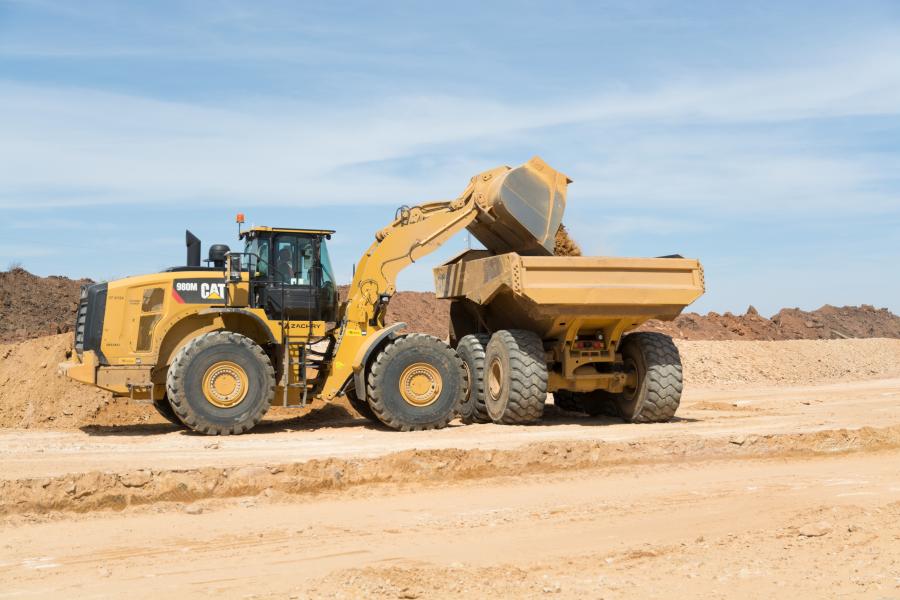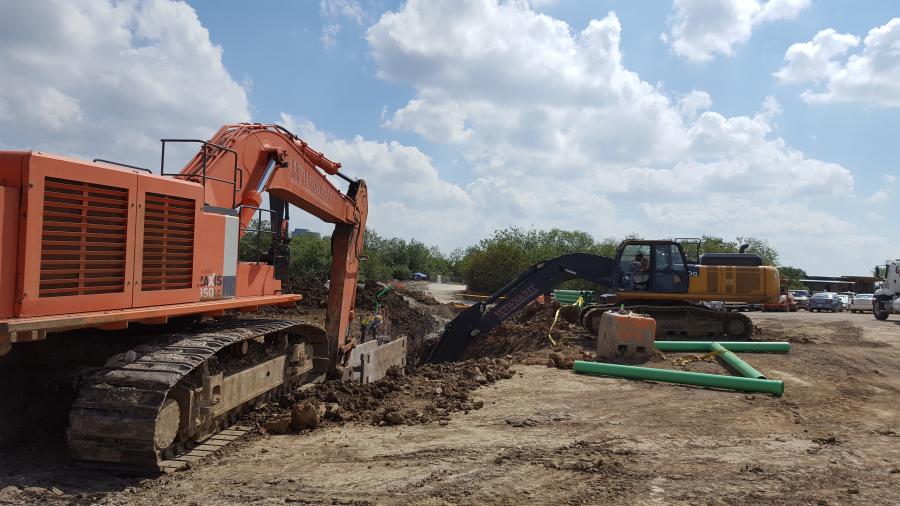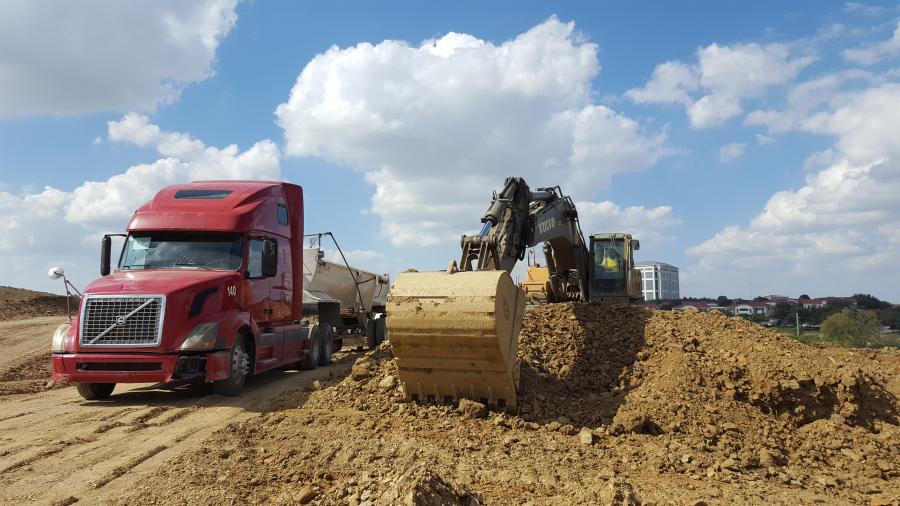Like the rest of the country, the COVID-19 pandemic hit Texas hard, but despite this medical emergency, the Texas Department of Transportation (TxDOT) currently has more than $24 billion worth of highway, bridge and infrastructure construction projects under way – the largest in the state's history.
This is no coincidence as Texas is home to five of the nation's 13 most populous cities and as the state continues to attract more people, the demands upon its transportation systems are increasing daily. Congestion on major urban highways is one of the main problems being addressed by TxDOT, and this is being done via the Texas Clear Lanes program, which is upgrading and expanding highways in major cities.
TxDOT's 2021 Unified Transportation Program — a $74.7 billion, 10-year plan — is guiding the planning and development for more than 8,000 projects over the next decade in rural, urban and metro districts. The agency has allocated 16.7 percent of the total funding to rural districts, 19 percent to urban districts and 47.7 percent to metro districts.
Texas's population has grown by 15 percent over the past 10 years — adding more people than any other state and, if trends continue, the population will increase from nearly 30 million to 47 million by 2050. This will also translate into a massive increase in the number of cars and commercial vehicles.
TxDOT, in its 2021 Progress Report released in February, highlights the ongoing construction projects across the state. In the past fiscal year alone, the agency approved more than $7 billion in construction and maintenance contracts and its payments to contractors increased 26 percent year over year from fiscal year 2019 to 2020. In addition to improving mobility, the projects are also addressing safety concerns related to aging infrastructure and roads and bridges that no longer meet current design standards.
"This is a historic time for our state's transportation system during the COVID 19 pandemic because it's how vital goods and services are delivered," said Texas Transportation Chairman J. Bruce Bugg Jr. "This wouldn't be possible without the 12,000 women and men at TxDOT who are dedicated to ‘Connecting You With Texas' in rural, urban and metro areas of our great state. Together, we are committed to executing every day – because that's what the Texas taxpayers who voted overwhelmingly to fund new roads in Texas expect and deserve.
"A major focus for the agency has been reducing congestion and improving mobility in our state's most congested areas through the commission's congestion relief initiative, Texas Clear Lanes," he added. "This effort, aimed at providing congestion relief through non-tolled projects, is focused on tackling the biggest traffic chokepoints in Austin, Dallas, Fort Worth, Houston and San Antonio – TxDOT's five metro districts. So far, we have completed six major Texas Clear Lanes projects, have 19 other projects under construction and 18 more in the planning stages."
As of last year, $24.9 billion has been assigned to Texas Clear Lanes non-tolled projects in metro districts for congestion relief, which has resulted 6,200 plus non-tolled projects awarded from Jan. 1, 2015, to Aug. 31, 2020. This has added more than 1,600 lane mi. between 2015 and 2020. Furthermore, 208 rural connectivity projects were completed since 2015 and another 145 have been under construction since last September.

From 2015 to 2020, $1.7 billion has been invested in modal programs to move people and goods throughout the state . This includes landside port connectivity for 13 public ports, development for 292 general aviation airports, rail improvements and rehabilitation among Texas' 9,000 plus public at-grade rail highway crossings, public transportation programs in rural and urban areas with more than 147 million one-way trips, and fleet and facility upgrades, and 120 plus locally sponsored projects providing safe routes to schools in rural and urban areas and the Statewide ADA Pedestrian Program for pedestrian accessibility, safety and mobility.
Many state governments have experienced difficulties in increasing gas taxes and other funding measures to secure funds for DOTs. In some cases it has taken years to address these issues, with several DOTs having to prepare for cutbacks and delaying projects.
"Eighty percent and 83 percent of Texans voted in favor of ballot measures in 2014 and 2015, respectively, to direct more state funding to the State Highway Fund for non-tolled road projects," noted the progress report.
Additionally, the commission allocated an extra $600 million for FY 2020-2021 for the "Road to Zero" goal of zero fatalities on Texas roads by 2050. This is geared toward safety improvements, adding to the safety components and dollars already committed to every project. In FY 2020, 90 safety project were funded.
"TxDOT also has invested an additional $1.48 billion for more than 3,200 targeted highway safety improvement projects in calendar years 2015 to 2020 to further support data-driven safety engineering solutions," stated the progress report.
The financing for the projects is based on a combination of state and federal resources.
"For years, traditional funding from state and federal gas tax revenues met the state highway system's needs," stated Texas Transportation Funding 2021 Edition (January). "Over time these revenues failed to meet the transportation needs of the state's growing population. To address the population boom and the diminishing purchasing power of traditional revenue sources, the Texas Legislature authorized TxDOT to issue debt. Bond proceeds allowed TxDOT to advance projects sooner and to pay those debts over several years.

"To date, the proceeds generated from the bonds [Proposition 14 State Highway Fund Bonds, Proposition 12 Highway Improvement General Obligation Bonds and Texas Mobility Fund Bonds] have been fully allocated and spent," it added. "All formerly permissible bond opportunities for additional funding have been exhausted or suspended. Following these bond programs, the Texas Legislature, with overwhelming voter approval, provided two new, non-traditional sources of funding known as Proposition 1 [2014] and Proposition 7 [2015]. This special edition brochure provides an overview of how TxDOT has used these funds and how these funds were reported in the fiscal year 2022-2023 Legislative Appropriations Request [LAR]."
The document also noted that for the next biennium, PTAC recommends $3.8 million to address population growth and anticipated shifts in formula allocation as a result of the 2020 Census.
"These funds sustain current state per capita funding levels for rural, small urban and large urban transit districts in response to the anticipated population growth forecast for 2020 Census results. TxDOT requests $10 million in general revenue for each year of the upcoming biennium to increase the Aviation Facilities Development Program [AFDP] and the Routine Airport Maintenance Program [RAMP], which support 278 Texas general aviation airports. Airport development needs at these airports exceed annual budget allocations by 68 percent. Funding for both programs has been level for the past 17 years, resulting in a 51 percent decrease in purchasing power due to increases in construction costs. The proposed funding would allocate $9 million to AFDP and $1 million allocated to RAMP annually."
"On behalf of the Port Authority Advisory Committee [PAAC], TxDOT requests $130 million in general revenue for FY 2022 and UB authority in FY 2023 for the Texas Ports Capital Program," it added. "Texas is the nation's leading import and export state and a leader in waterborne trade. To maintain this position and remain competitive in the future, both domestically and globally, Texas ports need additional funding for capital improvements and infrastructure." CEG
Irwin Rapoport
A journalist who started his career at a weekly community newspaper, Irwin Rapoport has written about construction and architecture for more than 15 years, as well as a variety of other subjects, such as recycling, environmental issues, business supply chains, property development, pulp and paper, agriculture, solar power and energy, and education. Getting the story right and illustrating the hard work and professionalism that goes into completing road, bridge, and building projects is important to him. A key element of his construction articles is to provide readers with an opportunity to see how general contractors and departments of transportation complete their projects and address challenges so that lessons learned can be shared with a wider audience.
Rapoport has a BA in History and a Minor in Political Science from Concordia University. His hobbies include hiking, birding, cycling, reading, going to concerts and plays, hanging out with friends and family, and architecture. He is keen to one day write an MA thesis on military and economic planning by the Great Powers prior to the start of the First World War.
Read more from Irwin Rapoport here.
Today's top stories


















